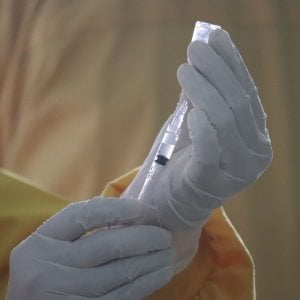Vaccines save lives, not only by directly preventing life-threatening diseases, but also by curbing the potentially deadly phenomenon of antibiotic resistance. at what time? Thanks to vaccines, at least half a million deaths could be saved every year. There is one thing to appreciate learn Management by the WHO, the International Vaccine Institute, Korea and the London School of Hygiene & Tropical Medicine, just published on the pages of the BMJ Global Health.
How vaccines help fight antimicrobial resistance
Antimicrobial resistance is a major problem: it is estimated that almost 5 million deaths are linked to antimicrobial resistance each year. Deaths that vaccines, even those that already exist, could contain in many ways. In fact, the authors write at the beginning of their article, vaccines can directly prevent infections and their transmission, including those from strains with antimicrobial resistance, even indirectly via herd immunity. They can therefore advise against the use of antimicrobials – the more frequently they are used, the greater the risk of developing resistant strains – especially if they are used improperly (e.g. against influenza) or to treat secondary infections caused by viral diseases. That is theoretically so, but how effective are vaccines in actually combating antimicrobial resistance? Something, for some infections something is known, but still too little.
Why should vaccines help fight antibiotic resistance?
The WHO study
For this reason, the researchers tried to assess to what extent the use of 15 vaccines (existing or under development) against bacterial infections could help to reduce the phenomenon of antimicrobial resistance. The bacteria considered were Acinetobacter baumannii, Enterococcus faecium, Escherichia coli, Group A streptococci, Haemophilus influenzae, Klebsiella pneumoniae, Mycobacterium tuberculosis, Neisseria gonorrhoeae, Non-typhoid salmonella, Pseudomonas aeruginosa, Salmonella paratyphi, Salmonella typhi, Shigella, and Staphylococcus aureus Streptococci and pneumonia. For bacteria that don’t yet have a vaccine, the researchers relied on the data currently available and on the assessments of some experts. The reference year was 2019 and the estimates were made considering different scenarios: one that only considered initial vaccination programs for specific age groups – or based on the evidence of existing vaccines and the populations included in the studies – another instead that involved a larger audience more at risk persons such as the elderly are taken into account. In this case, the authors point out, we are referring to an ideal model where vaccines would be distributed to all who could benefit.
As a result of the pandemic, 67 million children have not received essential vaccinations
by Simone Valesini

The benefits of vaccines against antimicrobial resistance
The results show that the use of vaccines would make an important contribution to reducing the burden of antimicrobial resistance. In the first scenario – with vaccines reserved for target populations – more than half a million deaths and 28 million lives lost (DALYs, disability-adjusted life-years, DALYs) could be saved due to infections. Of course, these benefits would be amplified if a larger population were vaccinated: in that case, an additional 1.2 million deaths could indeed be avoided and an additional 37 DALYs saved. The figures relate to antimicrobial resistance-related deaths and years of life lost, considering that the number of deaths directly attributable to antimicrobial resistance would increase a little further. And they are conservative estimates because the researchers said they didn’t take into account the transmission of resistant strains or vaccines against viruses in their calculations.
Unsurprisingly, Africa and the regions of Southeast Asia are the areas where vaccines would be particularly valuable, particularly to combat lower respiratory tract infections, tuberculosis and blood infections. Looking at bacteria, vaccines would mostly help fight infections and complications Mycobacterium tuberculosis and from Streptococcus pneumoniae.
The study is only an estimate, not without limitations as the authors themselves acknowledge – such as the fact that coverage may differ from area to area and therefore have different effects – but the message is clear: vaccines must Combating antimicrobial resistance is considered an aid and is also evaluated as such.



